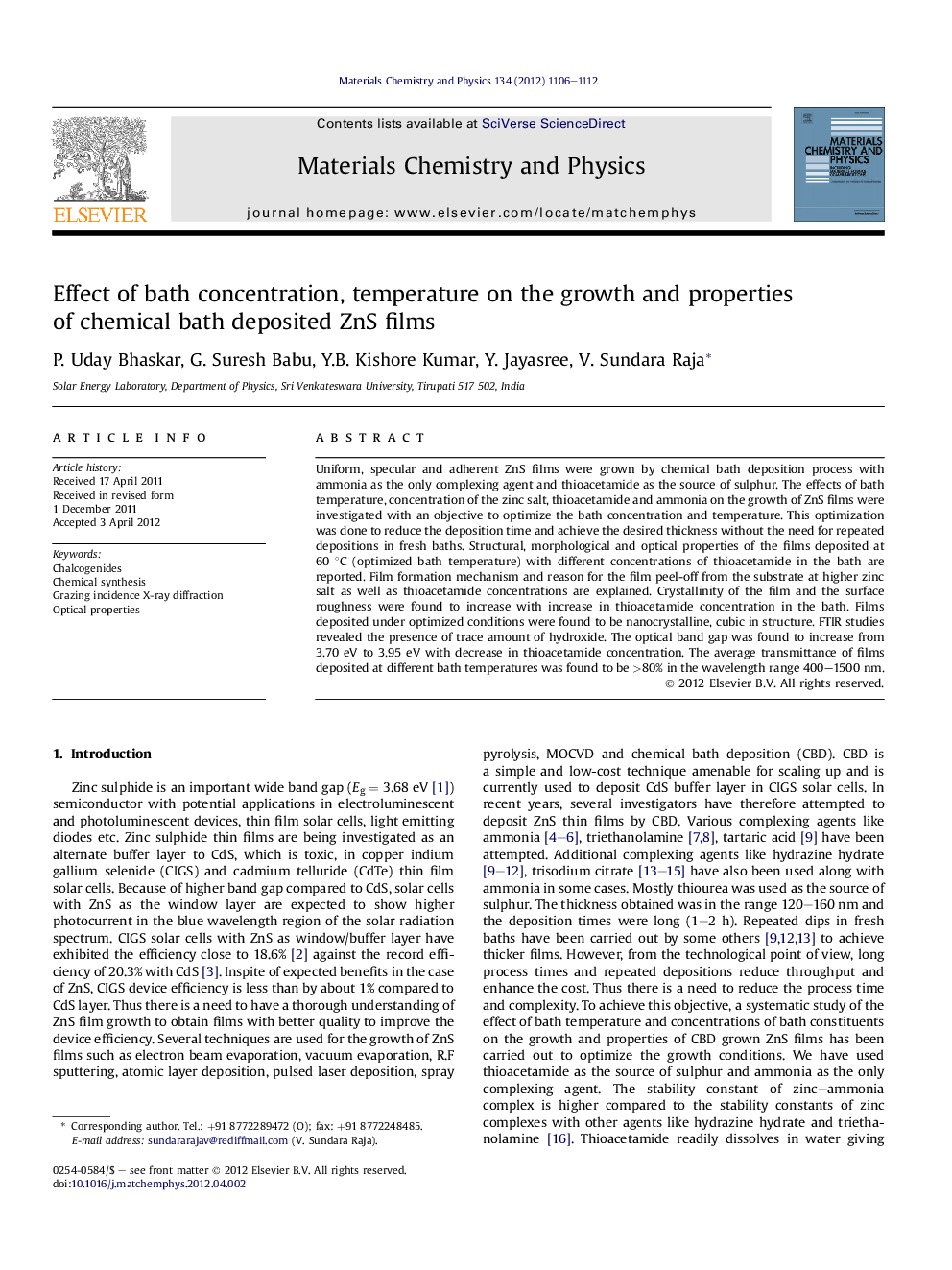| Article ID | Journal | Published Year | Pages | File Type |
|---|---|---|---|---|
| 1523036 | Materials Chemistry and Physics | 2012 | 7 Pages |
Uniform, specular and adherent ZnS films were grown by chemical bath deposition process with ammonia as the only complexing agent and thioacetamide as the source of sulphur. The effects of bath temperature, concentration of the zinc salt, thioacetamide and ammonia on the growth of ZnS films were investigated with an objective to optimize the bath concentration and temperature. This optimization was done to reduce the deposition time and achieve the desired thickness without the need for repeated depositions in fresh baths. Structural, morphological and optical properties of the films deposited at 60 °C (optimized bath temperature) with different concentrations of thioacetamide in the bath are reported. Film formation mechanism and reason for the film peel-off from the substrate at higher zinc salt as well as thioacetamide concentrations are explained. Crystallinity of the film and the surface roughness were found to increase with increase in thioacetamide concentration in the bath. Films deposited under optimized conditions were found to be nanocrystalline, cubic in structure. FTIR studies revealed the presence of trace amount of hydroxide. The optical band gap was found to increase from 3.70 eV to 3.95 eV with decrease in thioacetamide concentration. The average transmittance of films deposited at different bath temperatures was found to be >80% in the wavelength range 400–1500 nm.
► Effect of concentrations of bath constituents and temperature on ZnS film growth. ► Explanation for the film peel-off at higher zinc salt/thioacetamide concentration. ► Optimization of the bath concentration and temperature. ► Effect of thioacetamide concentration on structure, morphology and band gap. ► Effect of bath temperature on the optical band gap.
